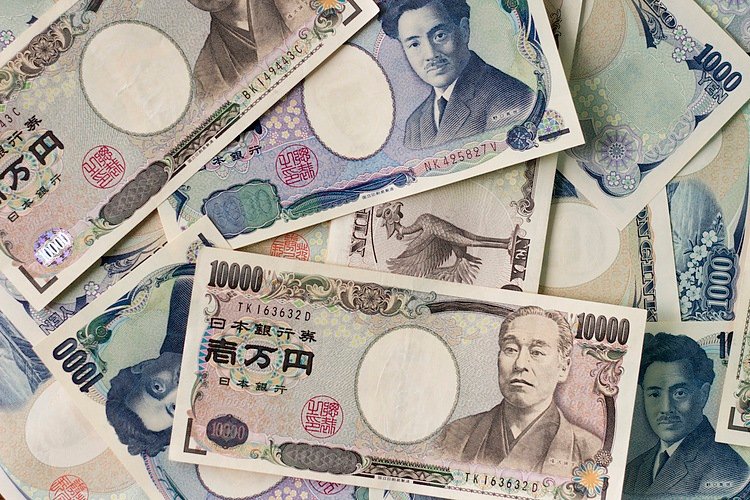- USD/JPY extends its downtrend as markets diggest Fed Chairman Powell’s speech and its implications.
- Expectations are for major cuts to US interest rates over the next year and a half as the US economy contracts.
- The Japanese Yen benefits from the further unwinding of the carry trade.
USD/JPY falls to the 144.10s on Monday, continuing its recent downtrend from the August 15 highs of 149.40. This means one US Dollar (USD) buys five less Japanese Yen (JPY) than it did 11 days ago.
USD’s recent depreciation is due to increasing expectations that US interest rates are set to fall. The expectation of lower interest rates is negative for the Dollar because it lowers foreign capital inflows.
On Friday, at a speech given in Jackson Hole where global central bankers met for their yearly roundtable, the Chairman of the Federal Reserve (Fed) Jerome Powell gave his clearest signal yet that the Fed was about to cut interest rates. High interest rates were negative for employment, he said, and since inflation was now coming down in a more sustainable fashion the time was right to start cutting. “Upside risks to inflation have diminished, downside risks to employment have increased,” said Powell. USD/JPY fell over 1.3% as a result.
In Japan deflation rather than inflation has been a problem, leading the Bank of Japan (BoJ) to keep interest rates ultra low – now 0.25% – and the Yen historically weak.
Despite efforts by the government to encourage higher wages, inflation remains stubbornly low. Recent inflation data showed headline inflation at 2.8% in July YoY, the same level as June, and inflation ex fresh food at 2.7% – up from 2.6% in the previous month, a rise which was in line with forecasts. Inflation with both fresh food and energy taken out meanwhile fell to 1.9% from 2.2% in the previous month, which is below the BoJ’s 2.0% target for core inflation.
This suggests the BoJ will not have a strong mandate to raise interest rates any higher and as a consequence the Yen will remain pressured. Even the fairly high 2.8% headline and ex-food inflation figures, it has been argued, were only high because of government energy subsidies which are to be canceled in September. This suggests a risk that after September inflation will also fall.
That said, economists seem to broadly agree that the BoJ will still make one more interest rate hike of 0.25%, bringing interest rates to 0.50%, before the end of the year. Advisory service Capital Economics believes the hike will happen in October. After that the view is that for the whole of 2025 inflation will remain subdued and the BoJ will not be able to raise interest rates any further.
In contrast markets are now pricing in 1.00% of cuts in 2024 and 1.30% of interest rate cuts by the Federal Reserve 2025, which if it were to happen would bring the Fed’s official interest rate down from a range of 5.50 – 5.25% to 3.20% – 2.95%. This would suggest that at the same time as US interest rates are falling by an aggregate of 2.3% over the next 16 months, Japanese Interest rates would be rising by 0.25% leading to an acute convergence of the current differential between the two. This partly explains the sudden fall in USD/JPY.
Another factor is that now the Yen has established a firmer uptrend it is becoming less attractive as a funding currency in the carry trade. This is an investment strategy in which traders borrow in a currency where interest rates are low – like the Japanese Yen (JPY) – and purchase a currency where interest rates are high – like the US Dollar, or the Mexican Peso.
Assuming no change in the exchange rate, traders stand to pocket the difference between the interest they have to pay on the loan and the interest they earn from the investment. However, given the Japanese Yen (JPY) is now trending higher and most of its favored carry counterparts are weakening, the carry trade is not as profitable as it used to be, and this “unwind” in long held carry positions is further propelling USD/JPY lower.



